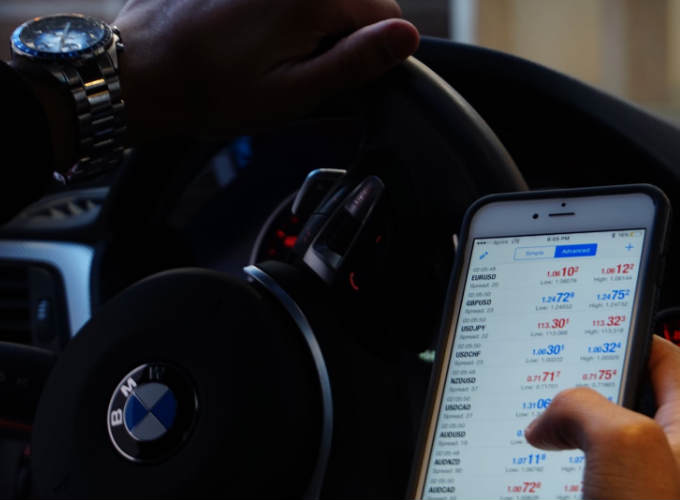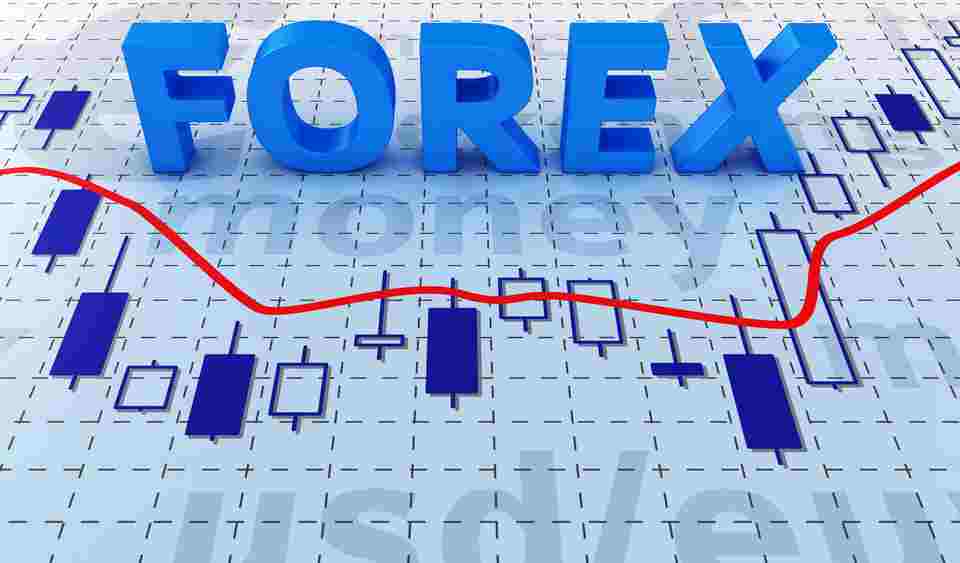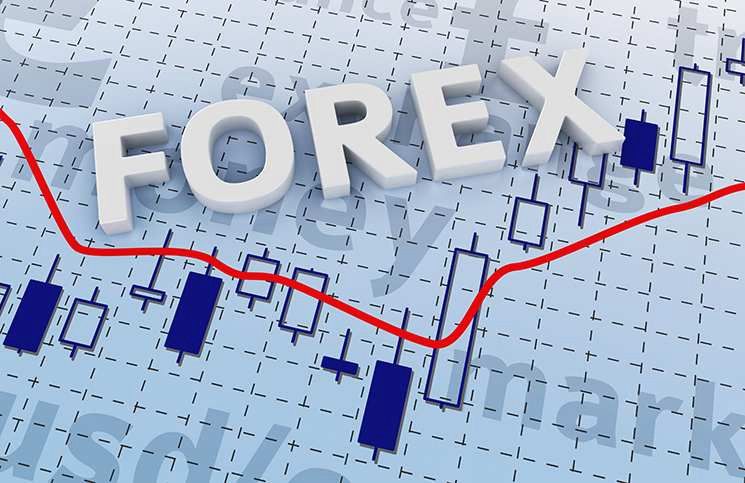Why Forex Leverage is Very Important for Beginners?

This guide will introduce everything you need to know about forex leverage, especially some important points for beginners.
Forex leverage is the amount of trading funds your broker is willing to credit your investment based on a ratio of your capital to the size of the credit. Your invested capital is usually only a fraction of the forex leverage credit size. In essence, leverage is borrowed capital you obtain from your broker to increase your potential returns.
The amount of leverage you can access differs from broker to broker. It also depends on the conditions for trading provided by your broker. You will be required to maintain a minimum balance in your account (usually a fraction of the leverage you will obtain) from which your leverage will be calculated based on the agreed-upon ratio. You use margin to create leverage. FX brokers call this trading on margin.
When trading with margin, the broker will set aside only a fraction of your position’s value, and they will fund the rest. Hence, you are said to be leveraged. The fraction of the position’s cost that was set aside is the margin requirement. It is expressed in percentage; say you are required to put up 2% of a $10,000 trading position you open. This means that you are trading at $10,000, but you only need to provide $200.
Leverage and investing
So, you were still wondering how leverage allows you to control more significant positions with only a fraction put up in actual trading capital. Here’s how.
Say you have $20,000 to invest and the economy is marking off quite favorably, you should be able to make a handsome gain if you leverage.
Your financial institution could lend you a lot more capital for investing, say 20 times your original capital. This makes your total capital $420,000. Impressive right?
So, you invest the amount in the property market. Over time, the value of the property increases by 10%. You sell the property and realize a profit of $42,000.
Since your original capital is only $20,000, a $42,000 profit translates to 210% percentage-wise. This is better than the 10% profit you would have realized from your original capital, had you not been leveraged.
Of course, tax, interests and other transactional fees are chargeable -and may sadly cut your gains by half- but this will undoubtedly leave you with $21,000 (105%) profit, which is quite a bounty.
Leverage Can Backfire
No doubt, leverage is an attractive tool for any investor to maximize their gains significantly. However, when the tides turn and the bubble bursts, things can get very ugly… fast.
Traditionally, if you invested $20,000 in property with your own capital and the property market falls 10%, you could cross your fingers and hope the bad times would pass soon, but still hold onto the property even with a $2,000 (10%) loss.
With leverage, however, after a 10% drop in the property market, your $420,000 investment would now be $378,000. The market still looks terrible and the financial institution that leveraged you soon ask for their money back.
They leveraged you 20% of your original capital, which translates to $400,000. But you can only get $378,000 for selling off the property. Meaning you still owe $22,000.
Now, let's look at your circumstances once more.
Not so long ago, you had $20,000 to invest, now after investing with leverage, you have lost your capital and still owe $22,000. From a downturn of 10%, you have suffered a loss of 210%!! And it’s actually even worse because you still have to pay interests, meaning you have easily made a loss of 250%.
Now you see, although leverage offers the ability to make some significant profits from investments, it can also be quite devastating if the market turns the other side. In the forex market, for instance, if the underlying currency pair moves against your position, leverage will translate into massive losses.
To avoid being caught up in a rather nasty situation, forex traders as other investors who take advantage of leveraged trades usually come up with smart trading styles and strategies that include strict risk management tools and controls like stop orders and limit orders. These help control the trade and manage any potential losses from escalating beyond what a trader can bare.
Now if you have a $2,000 account and want to trade with a 100:1 leverage, here’s what will happen.
You open a buy position on EURUSD with a trading volume of 10,000 at the current price of 1.0950 and with a stop-loss order set at 100 pips.
Your margin would be:
Margin = 1/Leverage
Margin = 1/100 = 0.01 or 1%
The required margin for this position would be:
Margin Requirement = Current Price × Units Traded × Margin
You want to buy 10,000 Euros (EUR) with a current price of 1.0950 USD, and your broker requires a 1% margin.
Required Margin = 10,000 × 1.0950 × 0.01 = $109.5USD.
Now, the trade moved against your position, and your stop-loss order was executed at the setpoint, 100pips. Let’s see how much you lost.
Since 1 pip in EURUSD is $1, you will make a loss of $100 at the stop-loss order at 100pips.
If there was no stop order and you left the trade to carry on exiting at 1.0550. You will have made a loss of $400 (400 pips). Without a stop-loss order, you put yourself at risk of losing quite a lot, depending on when you exit your losing position.
You are given the liberty of choosing your stop-loss order level for any/all of your positions. They can be used in both long and short positions. This is what makes it an excellent risk management tool when trading with leverage.
Forex Leverage Amounts
Forex leverage is usually calculated in fixed amounts which vary between brokers. Brokers leverage traders as per their riles and regulations. Forex leverage amounts are usually given as ratios, typically 10:1, 50:1, 100:1, 200:1, 400:1, and 500:1.
· 50:1: For every $1 you set aside as original capital; you can open a position worth up to $50. This means you can trade with up to $25,000 with a deposit of $500.
· 100:1: This is the typical leverage ratio offered to a standard lot account. This gives you the potential to control up to $200,000 in trade with a deposit of $2,000.
· 200:1: This is the typical leverage ratio for a mini lot account. The typical minimum margin for this account would be $500 with most brokers.
· 400:1: With this ratio, you can trade up to $400 with every dollar. Most brokers offer this leveraged amount on a mini lot account. Be careful with brokers that allow such leverage on a small account. A deposit of $500 into a forex leverage account of 400:1 could be wiped out instantly with only a few pips movement in the other direction.
Here are the different scenarios of how leverage can magnify your gains as well as your losses.
10:1 Leverage | Traditional Trade | |
Deposit | $1000 | $1000 |
5% Gain | $500 (50%) | $50 (5%) |
5% Loss | -$500 (50%) | -$50 (5%) |
50:1 Leverage | Traditional Trade | |
Deposit | $1000 | $1000 |
5% Gain | $2,500 (250%) | $50 (5%) |
5% Loss | -$2,500 (250%) | -$50 (5%) |
100:1 Leverage | Traditional Trade | |
Deposit | $1000 | $1000 |
5% Gain | $5,000 (500%) | $50 (5%) |
5% Loss | -$5,000 (500%) | -$50 (5%) |
200:1 Leverage | Traditional Trade | |
Deposit | $1000 | $1000 |
5% Gain | $10,000 (1000%) | $50 (5%) |
5% Loss | -$10,000 (1000%) | -$50 (5%) |
400:1 Leverage | Traditional Trade | |
Deposit | $1000 | $1000 |
5% Gain | $20,000 (2000%) | $50 (5%) |
5% Loss | -$20,000 (2000%) | -$50 (5%) |
In the trading scenarios above, the green shades show a trade gain of 5% while the red shades show a trade loss of 5%, covering what would be results for a position of $1,000 with different leverage ratios as well as a traditional trade with no leverage.
Without leverage, you gain and lose 5% with a $1,000 trade. However, with different leverage in place, you win (or lose) more than just 5% as shown in the tables above.
Best leverage with a $500 mini account
Before using leverage on a mini account, it is crucial that you first understand the advantages and disadvantages of trading with leverage. Remember not to be lured by the prospect of a monumental gain and forget the risk of your account being wiped out in consecutive losing trades. Even skilled traders experience streaks of losing trades, so a three to seven losing streak is not uncommon.
So, at this point, the question hold; how many strikes will your $500 mini account endure before you get a margin call? Will you maintain your cool after a 3-time losing streak?
There is no BEST fx leverage for any account. Heck, even a $10,000 account can go dry in just a matter of trades when leveraged. The reason why seasoned traders are successful is that they leverage low. You’ll find that most successful traders cap their leverage at 10:1 -and they rarely even reach that high, they linger somewhere about 5:1 and 3:1. Pretty moderate for an experienced trader, especially one with an adequately capitalized account.
You feel pretty confident about yourself and decide to open a $500 mini account trading leverage at $10,000 mini lots. This doesn’t look bad since you’ve had time to learn a few things about leverage and forex trading.
Trade 1 | Your first trade you buy 1 mini lot of EURUSD. Your true leverage is ($10,000/$500) 20:1. You set stop loss at 50 pips. The trade goes well, and you exit your position with a 60-pip gain. Your profits are ($1/pip * 1 lot) $60 You just made a 12% profit, and your new account balance is $560. |
Trade 2 | You are excited you had a great day. You feel good about yourself and want to double yesterday’s profits. Now, you buy 2 mini lots of EURUSD. Your true leverage is ($20,000/$560) 35:1. You set stop loss at 50 pips. The trade goes well again, and you exit your position with a 45-pip win. Your profits are ($1/pip * 2 lot) $90 You made a 16% profit, and your new account balance is $650. |
Trade 3 | Your confidence levels are through the roof. This time, you buy 5 mini lots of EURUSD. Your true leverage is ($50,000/$650) 76:1. You want the trade to last longer, so you set stop loss at 100 pips. Unfortunately, your stop-loss order gets triggered. You trade realizes a loss of ($1/pip * 5 lot) $500 Oops! We just lost 76% of your account, and your balance is now $150 |
You have lost $350 of your original capital in a matter of 3 trades of one loss. It won’t be long before you completely deplete the account. Here’s why you lost:
· You used up higher leverage on a mini-account
· Lack of adequate capitalization
· No uniform/ clear trade strategy – It would seem as if you were trading on pure luck
· Misusing the stop-loss order risk management tool
Do you still feel like continuing? Well, you should. But first, here are four tips that will help you in your next trades:
· Develop a reasonable trading capital.
· Create a working strategy and stick to it.
· Adhere to your risk management policies.
· Use demo accounts to practice and fine-tune your strategies.
BONUS TIP: Learn. Learn. Learn. There is never a wrong time to learn anything and everything about forex trading.
The Takeaway
Fx leverage gives you a boost that plunges your gains into the sky; or magnifies your losses beyond measure. Well, all forms of trading in the securities market involve some sort of risk.
Trading with leverage and margins in the forex market is not for the faint-hearted. The best traders develop robust trading strategies, backtest the strategy over different scenarios, and finetune their ort over time, and once they are comfortable the approach offers consistent results, they start taking up riskier but more promising trades.
Well, it goes without saying that if you are starting in the forex market and want to take advantage of Forex leverage, it would be wise to trade low and slow. Don’t use a 500:1 leverage with your first account, lest you want to be taken to the cleaners!
Trade on Forex, Commodities, Indices and Cryptocurrencies on Mitrade
At Mitrade, you can invest forex, cryptocurrencies, indices, and commodities via CFDs - contracts that track the change in value. Start trading your favorite products all on Mitrade app ››
* The content presented above, whether from a third party or not, is considered as general advice only. This article should not be construed as containing investment advice, investment recommendations, an offer of or solicitation for any transactions in financial instruments.
- Original
- Trading Analysis
Risk Warning: Trading may result in the loss of your entire capital. Trading OTC derivatives may not be suitable for everyone. Please consider our legal disclosure documents before using our services and ensure that you understand the risks involved. You do not own or have any interest in the underlying assets.






